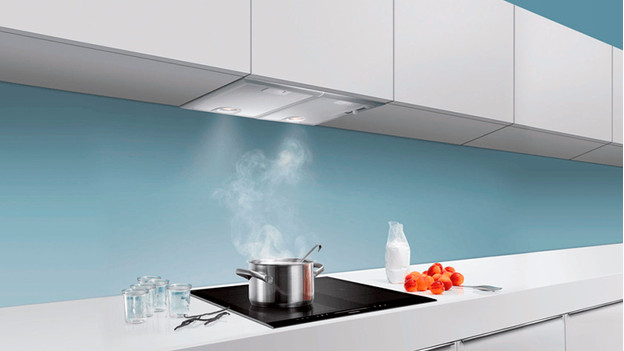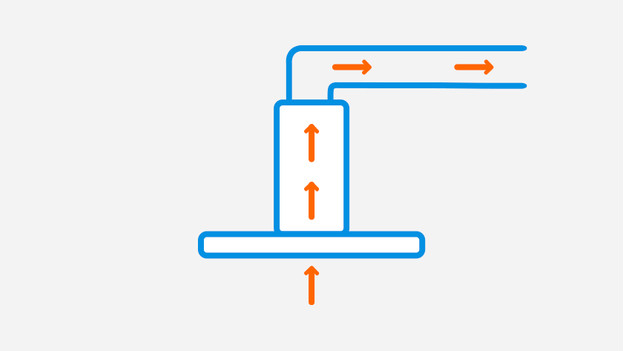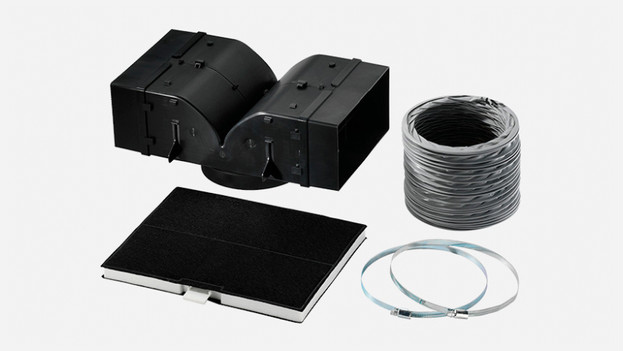
Advice on built-in range hoods
Placement

You install a built-in range hood and motor in the kitchen cabinet above your cooktop. Do you have an exhaust ventilation system? Keep the placement of the exhaust ventilation pipe in mind. You need a exhaust ventilation pipe and a hole in the wall for this. Don't have a hole in your wall? Choose a recirculation system.
Drain system

Before you choose a built-in range hood, it's important to check your current exhaust system. A built-in range hood is suitable for the following 2 ventilation systems.
- Exhaust ventilation system: the range hood exhausts the air to the outside via an exhaust ventilation pipe.
- Recirculation system: the range hood filters the air and blows clean air back into the kitchen.
A built-in range hood isn't suitable for a central ventilation system.
Size

Because you build a built-in range hood into a kitchen cabinet, you have to measure 2 things. Measure the width and depth of the niche.
- The niche width is the inside width of the desired spot.
- The niche depth is the inside depth of the desired spot. The standard width of the built-in range hood itself is 60 or 90cm. Make sure that the range hood is at least as wide as the cooktop.
Installation

To install the built-in range hood, check the manual of the manufacturer. Here, you can find exactly how to install the range hood. To install the ventilation system, you need the following:
- For an exhaust ventilation system: exhaust ventilation pipe.
- For a recirculation system: carbon filters and/or recirculation set.
Difference with under-cabinet

At first glance, a built-in rage hood looks like an under-cabinet range hood. There are a few differences:
- An under-cabinet range hood is suitable for a central ventilation system.
- An under-cabinet range hood has to be installed under a kitchen cabinet, so it's more visible.


